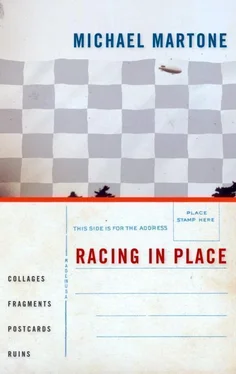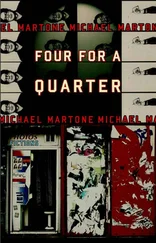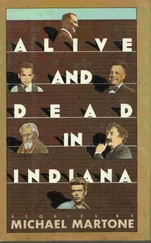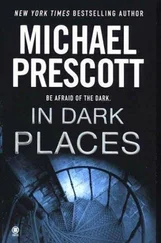8
There I was on the observation deck of the Sears Tower when it was the tallest building in the world. I was on the phone calling home. A cloudless day. The blue of the lake met the blue of the sky above like two swatches of paint sample, a minute modulation of the base tint separating them, blue one and blue two. A flock of crows launched from the green sward of Grant Park. As they rose the black birds transmuted, compressed and stretched into helicopters climbing. Four or five of them rising, rising up to my eye level where the two lead aircraft stalled and hovered in silence, their crew doors open and men inside looking back out at me. The tails of the hovering craft turned in circles as the others rushed past the windows, nose down, their blades pitched and biting in, the wash from their rotors beating the windows. Gone. Then those left, still levitating, drifted lazily straight up out of sight, gyring in the updraft of the building. A voice in my ear told me it was the president leaving town.
9
My little dictionary suggests that "story," the second meaning of the word-the complete horizontal division of a building constituting the area between two adjacent levels-comes to us from the Medieval Latin historia, "picture story." "Probably," the dictionary muses "from painted windows or sculpture on the front of buildings. See HISTORY." Indeed. I like this accident of history that abuts a synonym for floors in a building with "an account or recital of events or series of events, either true or fictitious." It conjectures a whole culture of gawkers staring up at the new buildings, getting the news from the stained glass, the has relief, the metopes tucked under the eves. The other story, the narrative one, is said to have a rising action, its pinnacle climax and its falling off. To travel vertically is to actually feel the feel of gravity, the rush of blood to your feet on a lift, the G in your seat in the airplane. And only then the hint of weightlessness at the peak when all that's solid vectors off as you descend. There is also the experience of the other weight we take for granted, the bearing down of all that's invisible, the mass of air that isn't there until you peel through its layers and its piercing registers in your ears. John Barth calls plot an incremental perturbation, a disturbance of gravity. Sure, the borders one crosses when one travels horizontally are real. They are cultural, national. You move from one dialect to the next, one language to another. But this journey is more picaresque perhaps, mere adventures. Traveling up and quickly, it is always quickly, one transgresses frontiers not of difference but of our very physical adaptation. The air thins. The blood boils. The story of Babel is the story of the invention of babble.
10
The story goes that a camera was found in the rubble of the collapsed World Trade Center. The disc inside the camera has miraculously survived and the image that arrives via e-mail, you are told, is only the most remarkable of the many recovered. From that image, you can imagine the story behind its taking. The camera's owner and a friend are on the tower's observation deck. "Stand over there and let me get a shot of you and the city below." You see a young man, smiling broadly in the foreground. Spread out behind him and below him is the grand canyon of the metropolis, the buttes and plateaus of lower Manhattan, the glinting river, and the escarpment of New Jersey. In the near background you can see the lip of the tower itself, the observation platform elevated and set back on the roof of the building. There, a few stories below, captured digitally, is the silver fuselage of the first plane a few meters away, it seems, from that morning's first catastrophe. The picture stands for the moment before the moment things all changed. It's a hoax, of course. The debunkers point out that even if you could believe the survival of the camera within the destruction, the deck hadn't yet opened that morning. I suppose too that an electronic camera would have time-coded the image and the real moment of its composition would have been recoverable. Still. It is the stillness of the shot that transfixes the viewer. Strangely, I want it to be real. Here would be Zeno's paradox. That airplane can never transverse the infinite and infinite regressing distances between points A and B. It never happened. The subject of the photograph, the smiling young man, is looking up at the camera. He looks like he doesn't know what is about to happen. How could he? When this picture was really taken, the one that was photoshopped into the fake, it was days or weeks before the events of September 11. His innocence is so convincing. What would be the other shots on that disk? The routine record of observing. The panoramic view of the island. The river widening out to the sea. The minute Statue of Liberty, a paperweight, on its slip of an island. The crowd of tourists on the observation deck, many of them taking pictures of what they had seen, proof they had been there stunned by this ordinary, this uneventful day.
11
Actors say they "go up" when they forget their lines during a performance. "He is going up." I suppose it derives from the unconscious gesture of rolling one's eyes heavenward looking for the lost words or cue. My first memory is of being on my father's shoulders. We are looking up at a tall building. In a window near the top, I see my mother. She is waving. My brother has just been born, and my mother is in the hospital. I am three. To write this essay, to write anything, I search through my memories. I like to think of them, my memories, arranged in library fashion on ascending stacks of stacks. In my imagination, there is one of those open ladders, rollers at its top running in channels and wheels wearing grooves on the floor. The ladder glides along the shelving. What I need to remember has always been kept on the upmost spot, the hardest part to reach. A place has these hidden coordinates: time and memory. We travel there. Through time and within memory. We return to the time when… When we tour, we want our destinations to remain timeless or, at least, to remain stuck in the time we first experienced them. In Athens, at the Acropolis, literarily the Summit City, they are restoring the ruins of the Parthenon, deteriorating from the city's pollution, to a state of pristine ruin: the moment the temple was blown up in the nineteenth century. I grew up in Fort Wayne, Indiana, called the Summit City for its location along a long-gone canal system. When I go back, I experience that distortion of scale that comes with travel through time, with the animation of memory. Things grow smaller as you go up. Things grow smaller as you go back in time.
12
I walked up the Washington Monument, the stairs winding around the one central elevator shaft fenced off by a wire screen. The occasional stone on the inside wall was inscribed by the donating charity, municipality, regiment. Here and there were scrubbed graffiti of the countless class trips. The windows on the cramped observation deck were miniscule, hard to get to as the current schoolchildren pressed in for a look. What I did see was the strange skyline of Washington, whose buildings are legislated to rise only so high as not to obscure the dome. It looked like about thirteen stories to me. An unlucky city, I thought. Off in the distance, I could glimpse the highrises of Virginia's Crystal City and the other taller obelisk dedicated to Washington by the Masons in Alexandria. The elevator delivered load after load of schoolchildren who rushed ten deep to the tiny windows. What had they come to see? What could they see? They were in a kind of space capsule not unlike the Apollo module that they had just seen at the Smithsonian. But now they were at the top of the rocket. A quick check out all the windows assured them of that. "Look!" they shouted. "Look how high up we are." And then it was time to go.
Читать дальше












